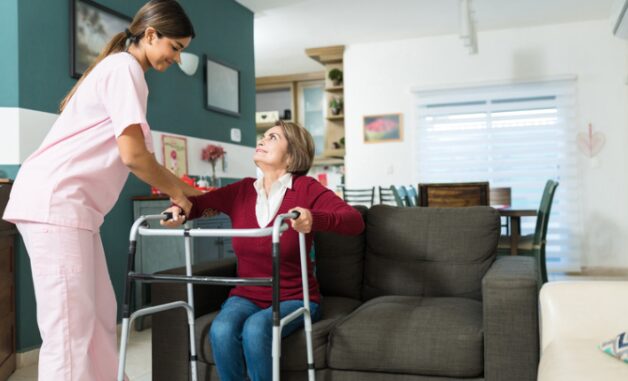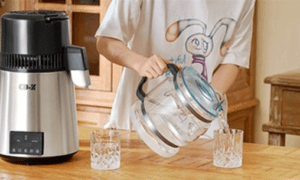Due to the rights and privileges stated above, it is important to make some changes in order to protect the client, as well as, make him/her comfortable while being at home. A medical bed for home may well be one of the greatest expenditures, but it is the only starting point. From widening doorways to installing voice controlled assistive devices, remodeling of living space should be done to make the home to support healing and encourage independence.
The Importance of a Supportive Home Environment
Enhancing Safety and Reducing Risks
Stumbles and falls, as well as accidental falls are a major problem to patients who have mobility issues or an underlying disease condition. A medical bed for home that has height adjustable facility as well control on side rails and comes with pressure care mattresses reduces risks in case of sleep or lying down. Apart from the floor around the bed, no obstacle or slippery surface, overcrowding of objects and inadequate lighting also contributes to potential dangers.
Promoting Physical and Emotional Well-Being
It is important that a space is well designed so that it can be able to offer healing to those who need physical and /or mental treatment. Proximity to basic through proper furniture arrangements that does not invoke a sense of hospital taste, comfortable and soothing colors and interior designs can help to ease stress and make the patients want to be active by performing some daily activities.
Essential Home Modifications for Patient Care
Bedroom Adjustments for Comfort
The bedrooms should be free from any activity that can cause disturbance and the furniture should be arranged in such a way that anyone can easily move around in them. A medical bed for home has features like feeding, reading or medical position for the convenience of the patient and the caretaker. Bedside cabinets where medications, water, or emergency devices could be placed are also important to have.
Bathroom Safety Upgrades
Bathrooms are high-risk areas. They ought to install grab bars next to the toilets and showers, use shower chairs, as well as prefer slip-resistant mats. Convenience is provided by walk-in tubs or hand held shower heads while raised toilet seats help minimize the stress when transferring.
Mobility-Friendly Living Spaces
Also ensure that the doors are wide enough to allow wheelchairs or walkers and ensure that stairs are replaced by ramps. Ensure that there are clear pass ways around rooms in which the furniture is placed in addition there should be easy access items. Most frequently used items should be placed within the reach and at waist level so that one does not have to bend or reach a lot.
Integrating Technology for Better Care
Remote Monitoring Systems
These are devices worn on the body or placed under the bed to monitor changes in vital signs, movement or lack of it, or sleep cycle. These tools enable the parents to feel relieved most of the time without the need to physically monitor their children all the time.
Smart Home Features
Smart lights, temperature control or security systems help patients operate them and make adjustments on their own. Other things such as reminders for taking drugs or other appointments also become easier in terms of automating them.
Emergency Response Solutions
Wearable buttons for medical alert systems guarantee that assistance is available when one falls or experiences any other calamity. It is necessary to note that these devices may be most helpful for those patients who live alone or have restricted mobility.
Creating a Calming and Accessible Atmosphere
Lighting and Color Choices
It is gentle lighting that does not cause glare, which proves to be rather beneficial for the eyes and makes the atmosphere pleasant. Thus, warm shades of colors on the walls or furniture will have a positive effect on the mood, and contrasting colors at edges or steps will help the people to see better.
Adaptive Furniture and Equipment
Special features such as seats with a lifting system, tables that can be adjusted to the extent of the user’s need, and orthopedic cushions will help make sitting more comfortable over long periods of time. The furniture should be strong enough to allow safe transfer of a disabled person and must be arranged in such a way.
Outdoor Accessibility
If possible, the environment should be designed outside with smooth walkways, shaded areas to sit, and level gardening plots. Each amenity may provide an opportunity to open windows and enjoy the fresh air, as well as engage in light exercise in the vicinity of nature, which may be helpful for mental health.
Financial and Practical Considerations
Budgeting for Home Upgrades
When it comes to modifications, the task is to prioritize them according to some urgent needs. Usually, a medical bed for home raises many questions about expenditure but one has to understand that while the permanent solution can be expensive, Things like removable grab bars or portable ramps can do the trick for a while.
Exploring Insurance and Grants
Determine whether or not the existing health insurance can provide the needed durable medical equipment or home modifications. They should also consider the possibility of receiving funding for accessibility from Nonprofit and government programs.
Temporary Solutions: Medical Bed Rental
For temporary requirements, a medical bed rental is more suitable as it is not a fixed and permanent investment. Convenient services normally involve delivery of equipment and setting up of the equipment and collection hence the equipment is suitable for people who are undergoing surgeries or patients who need the equipment for temporary ailment.
Conclusion
To support patients at home there’s always the need to improve on what is probably the most crucial aspect of patient care; home modifications. Beginning with a medical bed for home offers the basics of safety, with other alterations for the bathroom, smart home, and artwork and colors for the finishing touches for a complete safety care home. For the individuals who require a solution for a short-term, there is nothing better than a medical bed rental. No matter how small a change may be it makes a difference to a space that allows patients to heal with respect to their independence and comfort. Thus, the process of remodeling a home is not as simple as ‘home redesign’, it is in fact making a home.



































